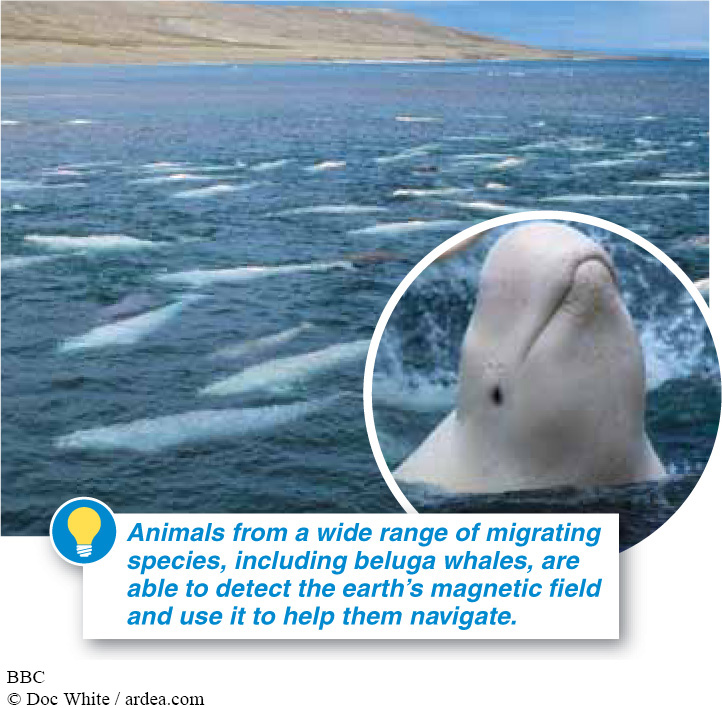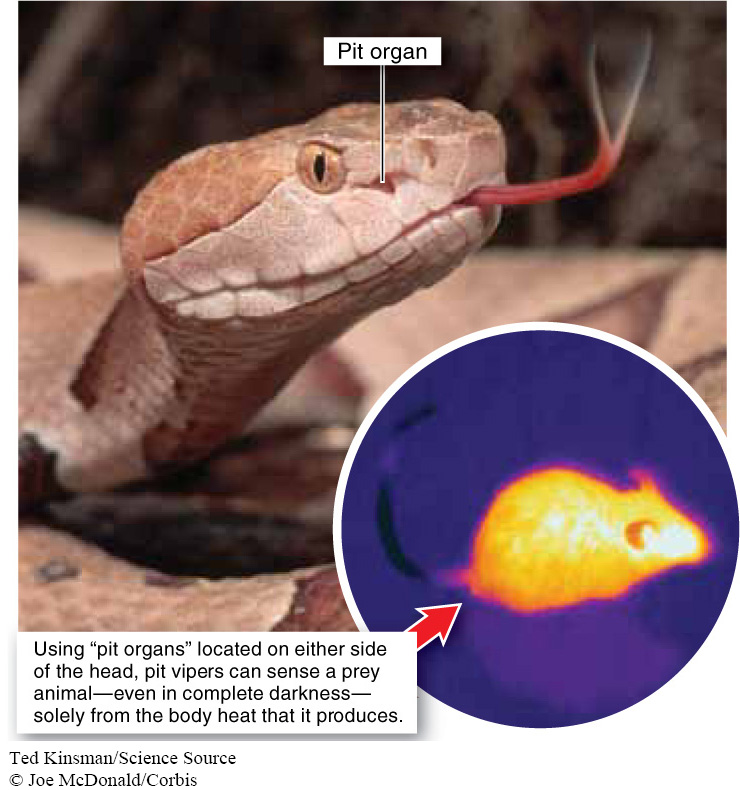

Often, we think of the senses as being limited to taste, smell, vision, hearing, and touch. Some animals, however, have more. These additional senses are made possible by specially modified neurons that respond to external stimuli by generating action potentials that convey information to the brain about the outside world.
Balance and Motion Many invertebrates (including jellyfish, lobsters, and crayfish) and all vertebrates have sensory cells that enable them to orient themselves with respect to gravity and to detect changes in velocity or orientation. These sensory cells are always some sort of hair cells that can be pushed in one direction or another, much as grass is blown by the wind. The force exerted on the hair cells (which in vertebrates, as we’ve seen, are located in the inner ear) gives information about the movement of the organism. In a variation on the sense of touch, in many mammals the sensations detected by whiskers can also convey information about balance and motion.
Electricity Marine animals of many types are sensitive to tiny electrical changes in the water around them. Sharks have sensory cells, embedded within sacs in their skin, that are open to the external surroundings. These cells are so sensitive to electrical changes around them that they can sense the muscle contractions of a fish swimming nearby. This ability to sense changes in electrical charge helps sharks to track down prey.
Magnetism Compass needles point north because of the faint magnetic field produced by the earth. A wide range of species, from birds to eels and sharks and migrating beluga whales, and even some bacteria, are able to detect this magnetic field and use it to help them navigate (FIGURE 23-31). In some clever but devious experiments, researchers placed strong magnets around some bird cages, deflecting the earth’s magnetic field. This caused the birds to shift their orientation within the cages by exactly the amount that the magnetic field had been moved. Very little is known about how sensory cells have evolved to detect and respond to magnetism.
Heat Unlike the way you sense heat by touching a hot plate or feeling warm when the air around you is hot, pythons, vipers, and some other snakes can “see” heat differences in their environment. Using “pit organs” located on either side of the head, they can sense—
TAKE-HOME MESSAGE 23.14
Among animals, there are several senses in addition to taste, smell, vision, hearing, and touch, including those that perceive and respond to balance and motion, electricity, magnetism, and heat production in the animal’s environment.
How might a marine predator, such as a shark, benefit from being able to detect electrical impulses in its environment?
The ability to detect electrical impulses from muscle contractions of nearby marine life allows predators to more easily find prey.
943